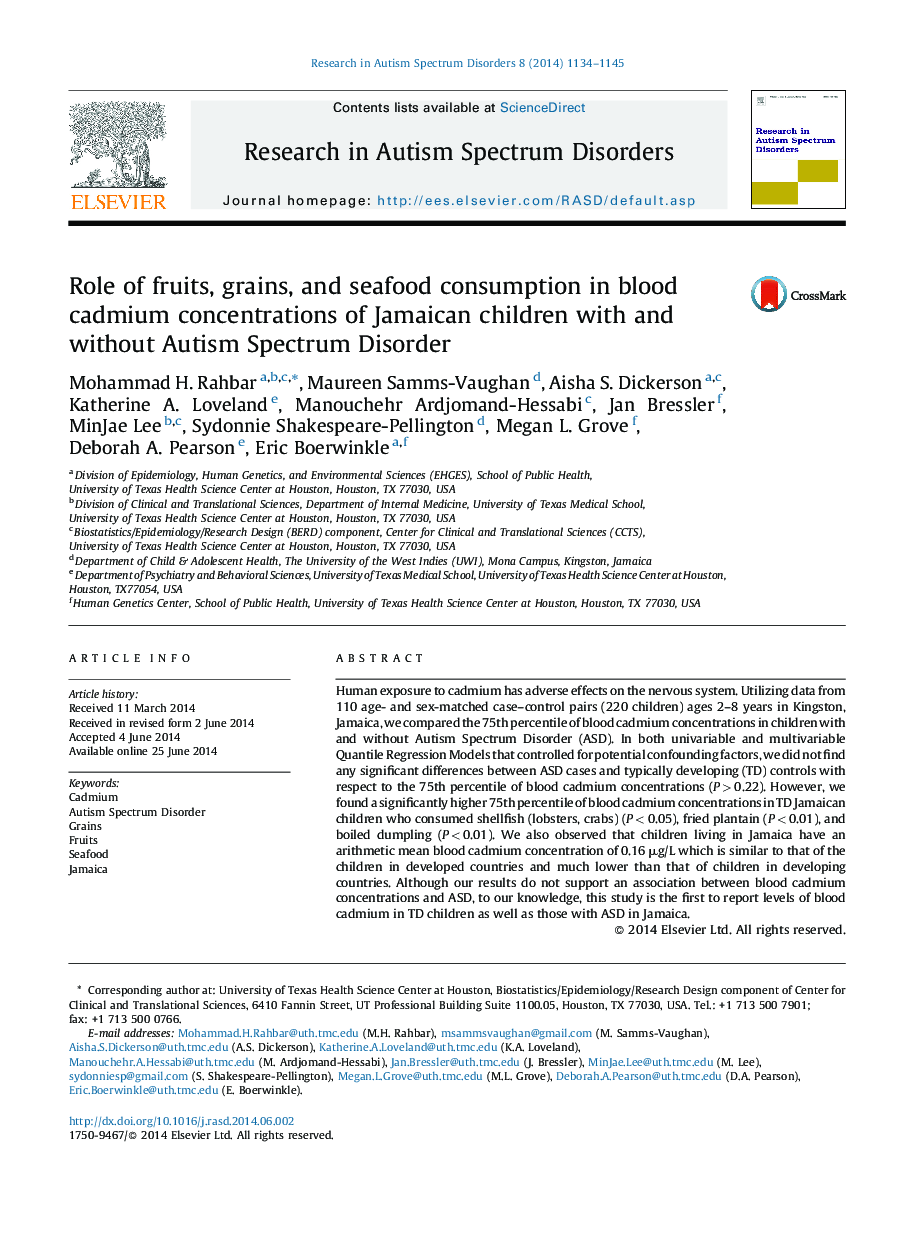| کد مقاله | کد نشریه | سال انتشار | مقاله انگلیسی | نسخه تمام متن |
|---|---|---|---|---|
| 370104 | 621845 | 2014 | 12 صفحه PDF | دانلود رایگان |
• We investigated the role of exposure to cadmium on autism in Jamaican children.
• We did not find an association between autism and blood cadmium in Jamaican children.
• We identified factors associated with blood cadmium levels in Jamaican children.
• We found significantly higher blood cadmium levels in children eating shellfish.
• We found higher blood cadmium levels in children eating fried plantain.
Human exposure to cadmium has adverse effects on the nervous system. Utilizing data from 110 age- and sex-matched case–control pairs (220 children) ages 2–8 years in Kingston, Jamaica, we compared the 75th percentile of blood cadmium concentrations in children with and without Autism Spectrum Disorder (ASD). In both univariable and multivariable Quantile Regression Models that controlled for potential confounding factors, we did not find any significant differences between ASD cases and typically developing (TD) controls with respect to the 75th percentile of blood cadmium concentrations (P > 0.22). However, we found a significantly higher 75th percentile of blood cadmium concentrations in TD Jamaican children who consumed shellfish (lobsters, crabs) (P < 0.05), fried plantain (P < 0.01), and boiled dumpling (P < 0.01). We also observed that children living in Jamaica have an arithmetic mean blood cadmium concentration of 0.16 μg/L which is similar to that of the children in developed countries and much lower than that of children in developing countries. Although our results do not support an association between blood cadmium concentrations and ASD, to our knowledge, this study is the first to report levels of blood cadmium in TD children as well as those with ASD in Jamaica.
Journal: Research in Autism Spectrum Disorders - Volume 8, Issue 9, September 2014, Pages 1134–1145
